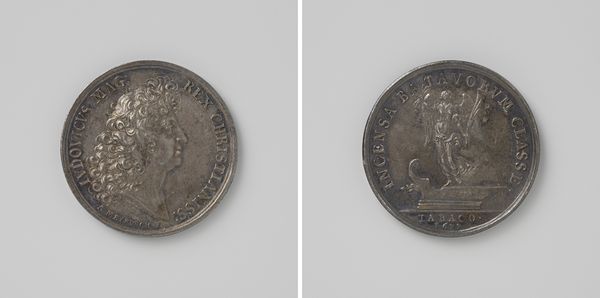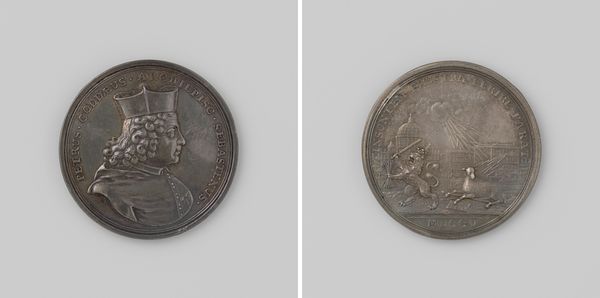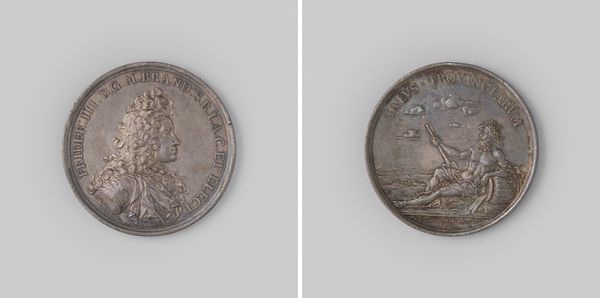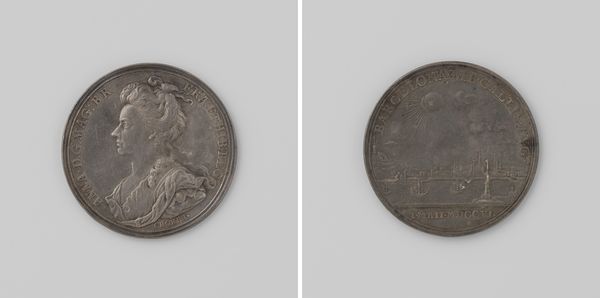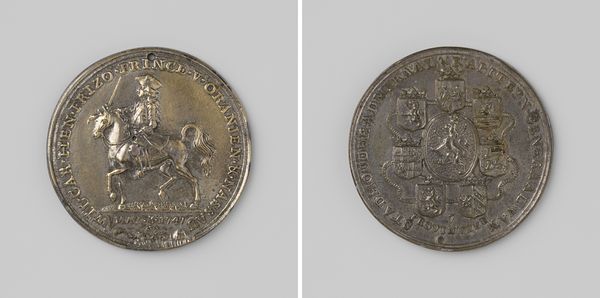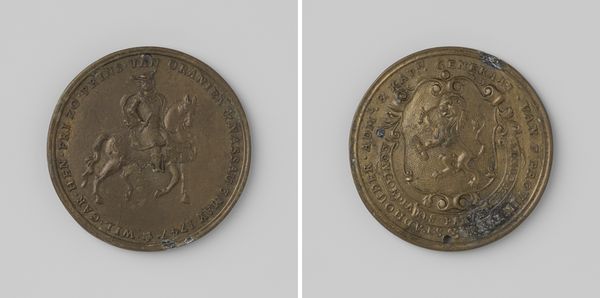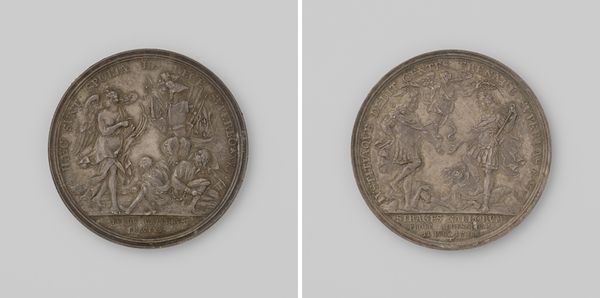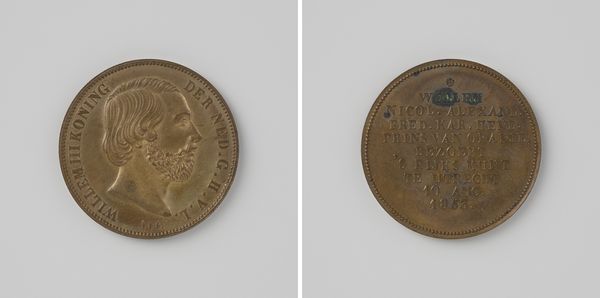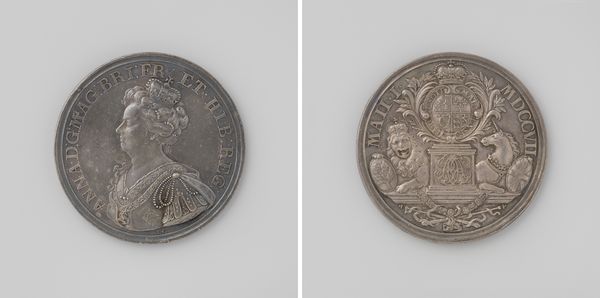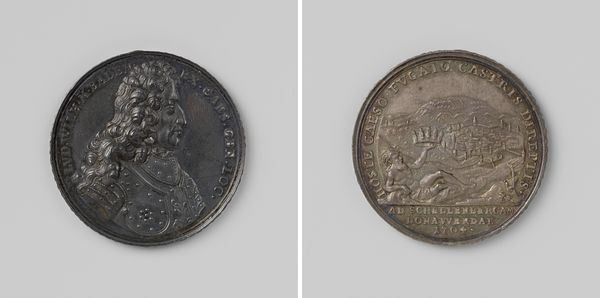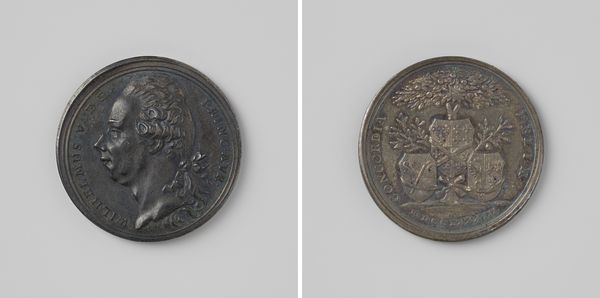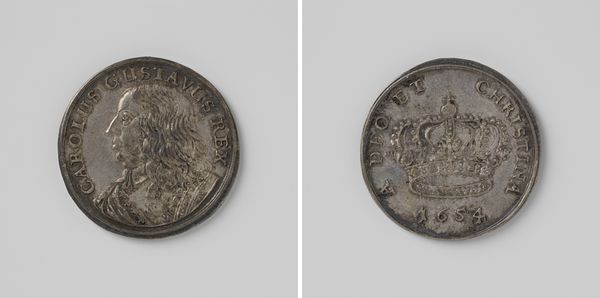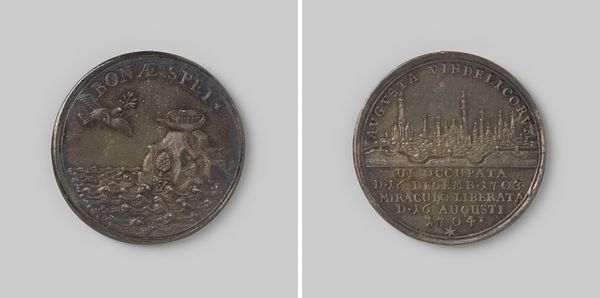
metal, bronze
#
portrait
#
medal
#
neoclacissism
#
metal
#
bronze
#
history-painting
Dimensions: diameter 4.2 cm, weight 39.45 gr
Copyright: Rijks Museum: Open Domain
Curator: Alright, let’s discuss this bronze medal from 1834 entitled "Instelling van de Leopold Orde, ter ere van Leopold I, koning der Belgen" by M. Borrel. It commemorates the founding of the Order of Leopold by Leopold I, King of the Belgians. Editor: It strikes me as strangely melancholic for something celebrating an order! There’s a somber weight to it, almost like a coin you'd flip in a film before making a big, maybe terrible, decision. Is it the starkness? The monochromatic tones? Curator: The sobriety you're sensing might be deliberate. The Order itself was meant to signify national unity and civic merit, which, given the recent Belgian Revolution, was a weighty matter. The neo-classical style further emphasizes that solemnity and civic virtue so popular during this era. Editor: Neo-classical alright, but it also seems a bit impersonal. Look at Leopold's portrait on the face – he seems less like a man and more like a…well, a bronze ideal of leadership. I suppose it makes sense though. The aim was less Leopold, more 'The Idea of Leopold,' a ruler for a fledgling nation. Curator: Precisely. Consider the iconography: Leopold’s profile embodies that "idea," projecting stability and statesmanship. Turn to the reverse, you see the insignia of the Leopold Order itself—the crown, the heraldic lion—symbols carefully selected to create a sense of national identity and pride after a tumultuous split from the Netherlands. Editor: You’ve got this star bursting forth under the regal crown… all a bit stiff, almost comically overloaded. Maybe Borrel had a point to make about what can happen to idealistic notions of nationhood once all the ceremonial trappings and bureaucracy pile on top. Curator: Well, this medal would have played a very specific public role – cementing a symbolic narrative and reinforcing social hierarchy, but let’s remember it's also art. Borrel, regardless of any political inclination, had to make a visually persuasive piece, functioning almost like a proto-public service announcement, with the material—the unyielding bronze—itself conveying endurance and steadfastness. Editor: So, beyond the King, Order and all that jazz, is there an impact in this object, something less explicit? To me, the heavy quality and sharp relief still carry an edge that goes beyond commemorating an order. It feels like a quiet acknowledgement that even noble initiatives bear the potential to become frozen icons and bureaucratic excess. Curator: I appreciate that perspective. I see now this small object encapsulating Belgium's forging its national identity. Editor: And perhaps serving as a timeless visual commentary of national orders. It really brings out the complex relations between political aspirations and symbolic objects.
Comments
No comments
Be the first to comment and join the conversation on the ultimate creative platform.

